How the World Went Loco For Locust Pizza
It all started as a little joke.
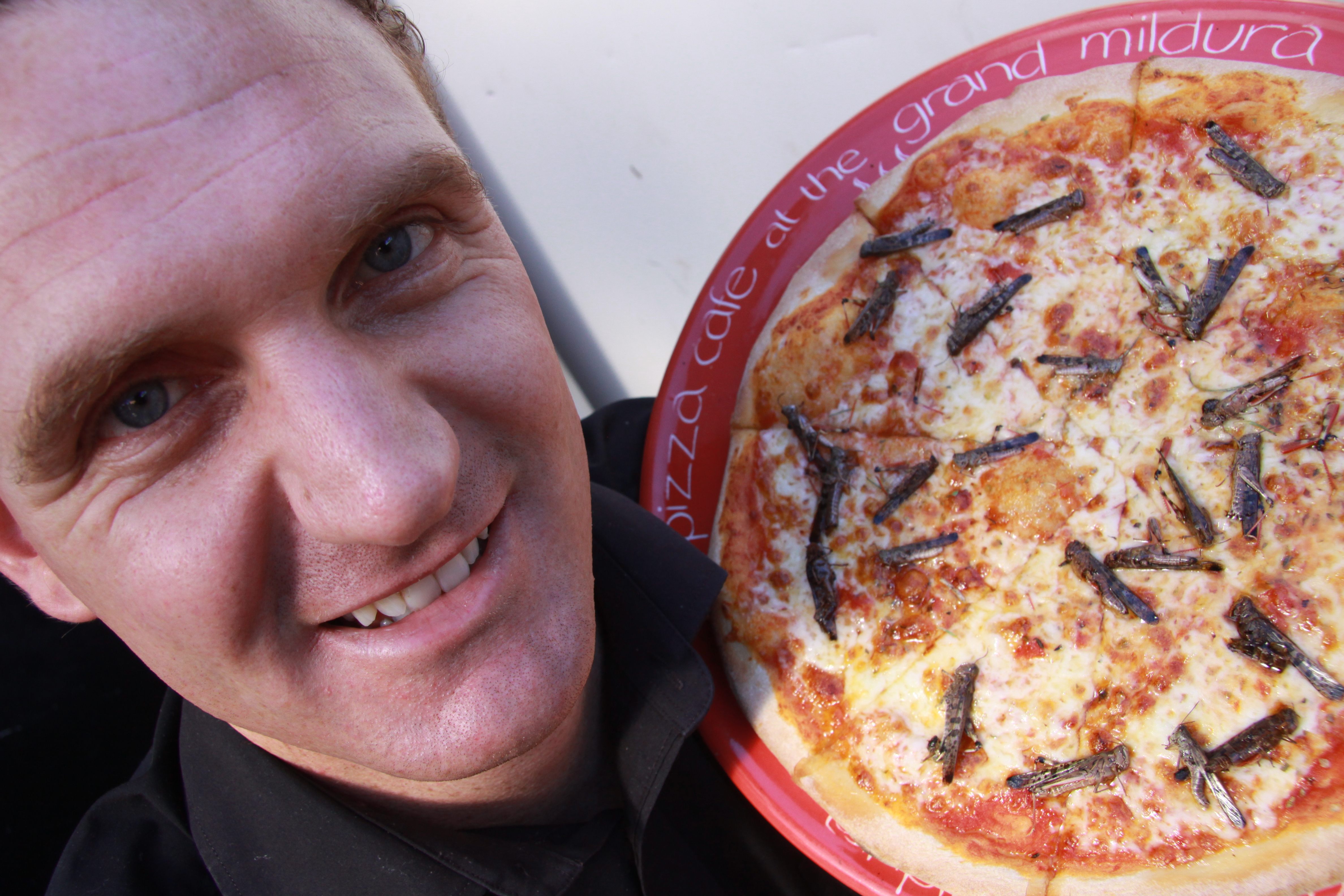 The famed picture of Pizza Café owner Joe Carrazza with his locust pizza. (Photo: Courtesy of Glenn Milne)
The famed picture of Pizza Café owner Joe Carrazza with his locust pizza. (Photo: Courtesy of Glenn Milne)

A swarm of locusts, a mayor with an idea, and photograph of a pizza—it was the recipe for a global sensation.
In April 2010, the southeast Australian country town of Mildura, population 35,000, was plagued with the biggest swarm of locusts the area had seen in decades.

Seeking a creative way to cover this unprecedented invasion, the Herald Sun newspaper approached Mildura mayor Glenn Milne, who is also a freelance photographer. Milne initially wanted to take a photo of a local chef using the locusts in a chocolate dish, but after that chef rejected his idea, the mayor turned to one of his favorite local eateries—the Pizza Café, owned by Joe Carrazza.
Milne had Carrazza pose for a “quirky photograph” in which he held up a pizza topped with locusts. “He was happy to do that,” Milne said. The photo appeared alongside a tongue-in-cheek Herald Sun story that presented several ways to serve up locusts in a meal.
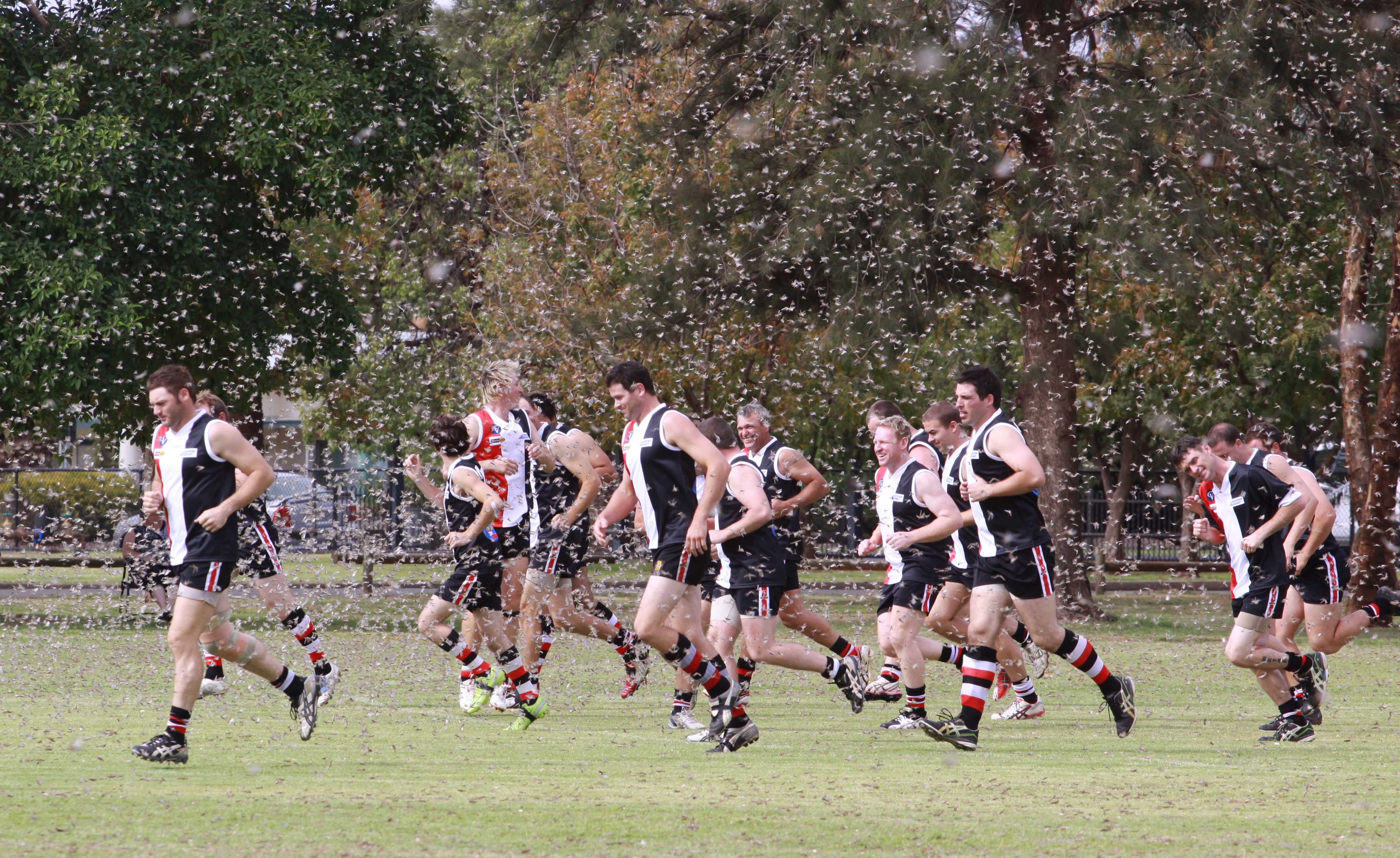 A swarm of locusts interrupting a rugby game. (Photo: Courtesy of Glenn Milne)
A swarm of locusts interrupting a rugby game. (Photo: Courtesy of Glenn Milne)When the Herald Sun approached Milne, he said, they wanted a photo that was all in good fun. They never expected anyone to actually eat the pizzas, for Carrazza to put locust pizza on his menu, or for anyone to be convinced that the locals were chowing down on this dish. But that’s not what happened. What started out as a joke turned into a worldwide phenomenon.
According to Milne, after Australia’s public broadcaster put the story on its website, the internet couldn’t get enough of it. The story spread faster and farther than the swarm of locusts it chronicled.
“The web picked it up around the world, and it just went crazy. Everybody was ringing us up asking us if we’re eating locust pizza. It just went viral,” he says.
Two days after the initial story by the Herald Sun, the Australian Broadcasting Corporation wrote a piece about it, followed by the website DNA India. Next came a piece in the New York Daily News and features on the websites Metro, Serious Eats, and Trend Hunter.
 Headlines from (top) NY Daily News; Serious Eats; Trend Hunter; ABC News; DNA India
Headlines from (top) NY Daily News; Serious Eats; Trend Hunter; ABC News; DNA India
Soon, a Korean TV station had taken notice of the story, Milne said, and some producers flew down to film a feature story to broadcast all over their country. And within a couple of days, the story had been picked up by a newspaper in the U.K. Milne found out when his sister texted him from London, having seen the locust pizza photograph on the front page.
In his home country, the joke photograph landed Milne in some hot water—his status as mayor at the time led some to question his intentions.
“The Drive Time [radio] program [in Sydney] is the most popular, and they sort of said, ‘Well, what’s this all about?’ and I said ‘You know, it’s a bit of a joke.’ And so they said to me, ‘What? You’re the mayor. You’re a politician. And you lied basically.’ And I said, ‘Well, yeah, if you like to put it that way.’”
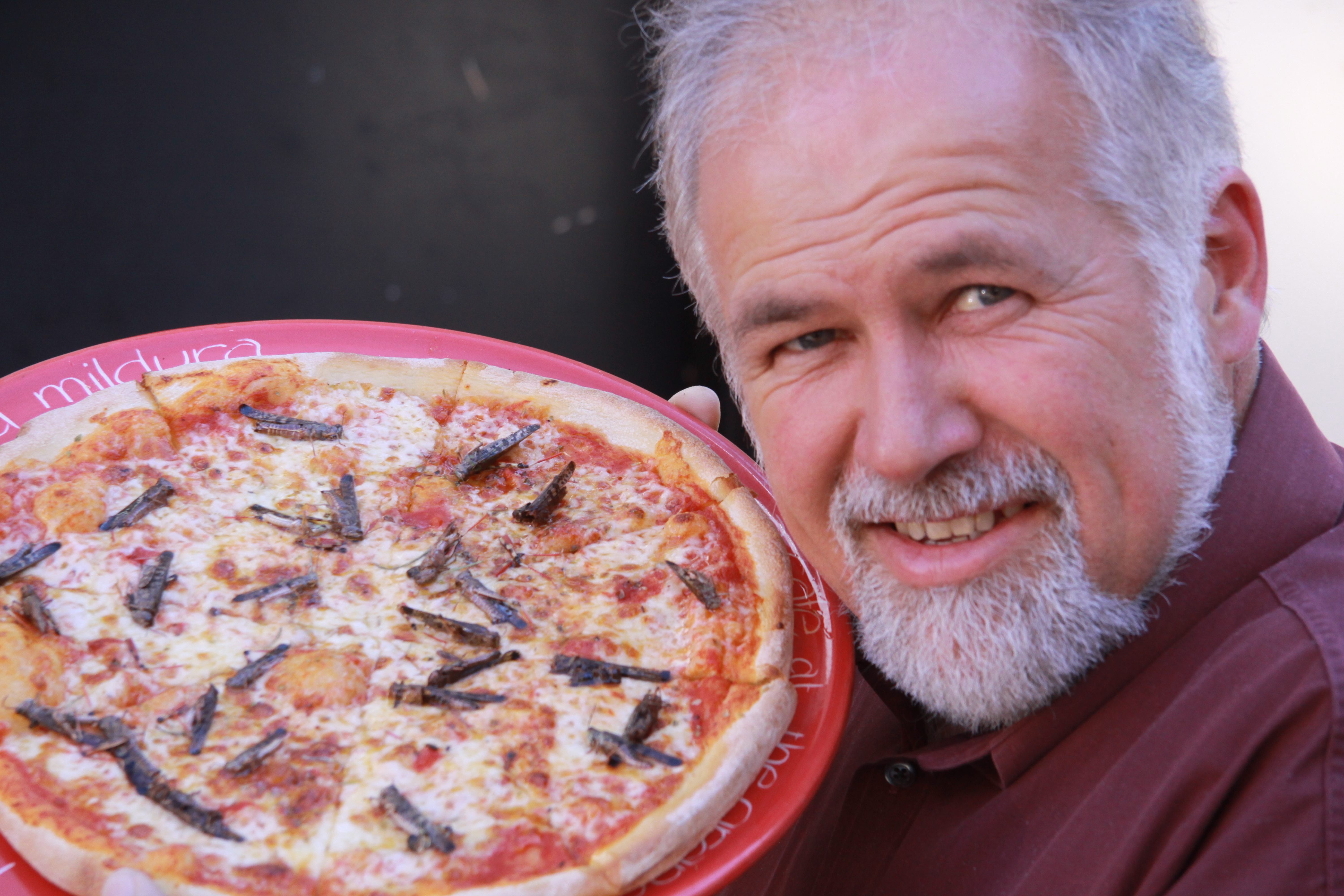 Mayor Glenn Milne of Mildura holding a locust pizza. (Photo: Courtesy of Glenn Milne)
Mayor Glenn Milne of Mildura holding a locust pizza. (Photo: Courtesy of Glenn Milne)
Despite the international recognition, Milne never once tried a slice of locust pizza. “I’m not really big into eating insects,” he says.
But that doesn’t mean others around the world haven’t tried them. In fact, they’re considered quite delicious in parts of Africa, Asia, and the Middle East.
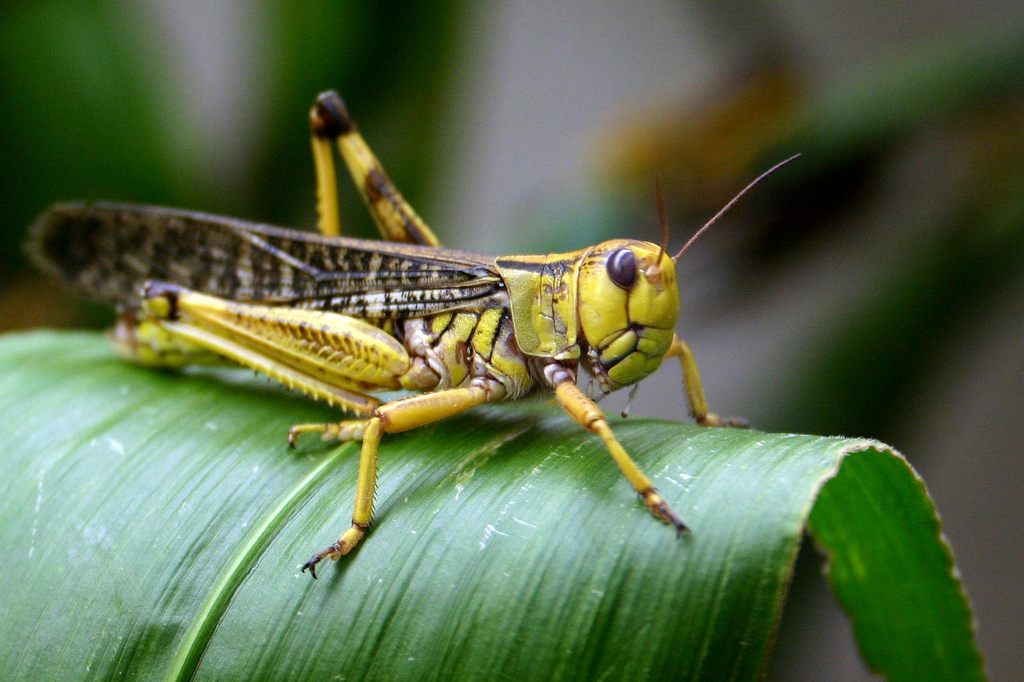 A locust. (Photo: Till Westermayer/CC BY-SA 2.0)
A locust. (Photo: Till Westermayer/CC BY-SA 2.0)
The protein content in locusts varies from around 50 to 60 percent, according to the books Insects by Steven Parker. This means their protein content is comparable to that of raw beef. They’re also known to have around a 12 percent fat content and many nutrients like calcium, magnesium, iodine, phosphorus, and riboflavin.
The mayor says he never intended to deceive anyone but that he didn’t regret the effects his little joke had.
“Look, I don’t apologize,” he told the hosts of Drive Time, “because we got fantastic publicity out of it, and it’s been good fun.”
Gastro Obscura covers the world’s most wondrous food and drink.
Sign up for our regular newsletter.





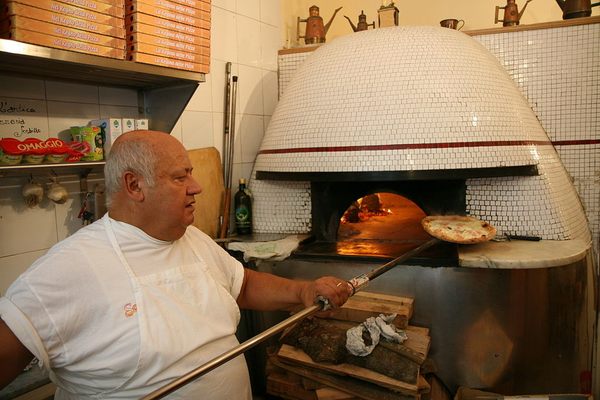














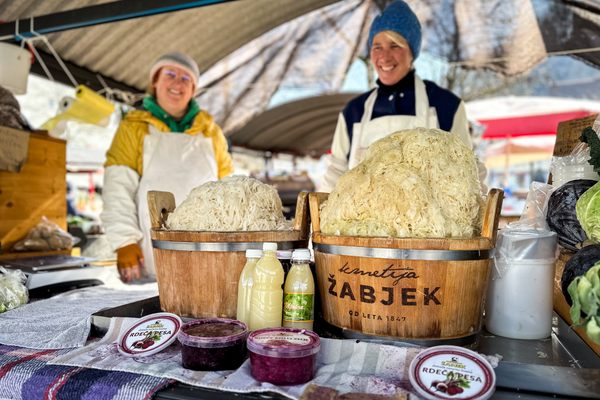



Follow us on Twitter to get the latest on the world's hidden wonders.
Like us on Facebook to get the latest on the world's hidden wonders.
Follow us on Twitter Like us on Facebook